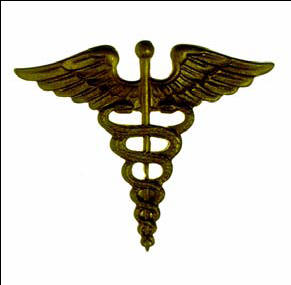USAMRIIDís MEDICAL MANAGEMENT OF
BIOLOGICAL CASUALTIES HANDBOOK
Fifth Edition, August 2004
INTRODUCTION
|
"Medical defense against the use of biological pathogens and toxins as weapons of warfare or terrorism is an area of study previously unfamiliar to many health-care providers. The U.S. military has maintained an ongoing research agenda against biological weapon threats since World War II, but the terrorist attacks on the U.S. mainland in September 2001 and the anthrax mail attacks in October 2001 provided a wake-up call for lawmakers, the public at large, and medical providers of all backgrounds that the threat of biological attacks was real and required planning, training, and resources for response. Consequently, there has been an explosion of interest among health-care practitioners to understand better how to manage the medical consequences of exposure to biological weapons that can lead to mass casualties. Numerous measures to improve preparedness for and response to biological warfare (BW) or terrorism are ongoing at local, state, and federal levels. Training efforts have increased in both military and civilian sectors. A week-long Medical Management of Chemical and Biological Casualties Course taught at both USAMRIID and USAMRICD trains over 560 military medical professionals each year on biological and chemical medical defense. The highly successful USAMRIID international satellite courses on the Medical Management of Biological Casualties have reached over 110,000 medical personnel since 1997. Through this handbook and courses noted above, medical professionals learn that effective medical countermeasures are available against many of the bacteria, viruses, and toxins that might be used as biological weapons against our military forces or civilian communities. The importance of this education cannot be overemphasized and it is hoped that health-care professionals will develop a solid understanding of the biological threats we face and the effective medical defenses against these threats." |
Even if providers have not read the text thoroughly, the purpose of this handbook is to serve as a concise pocket-sized manual that can be pulled off the shelf (or from a pocket) in a crisis to guide medical personnel in the prophylaxis and management of biological casualties. It is designed as a quick reference and overview, and is not intended as a definitive text on the medical management of biological casualties. More in-depth discussion of the agents covered here may be found in infectious diseases, tropical medicine, and disaster management textbooks." U.S. ARMY MEDICAL RESEARCH
INSTITUTE OF INFECTIOUS DISEASES
|
Home ∑ Textbooks and Manuals ∑ Videos ∑ Lectures ∑ Distance Learning ∑ Training ∑ Operational Safety ∑ Search
This website is dedicated to the development and dissemination of medical information that may be useful to those who practice Operational Medicine. This website is privately-held and not connected to any governmental agency. The views expressed here are those of the authors, and unless otherwise noted, do not necessarily reflect the views of the Brookside Associates, Ltd., any governmental or private organizations. All writings, discussions, and publications on this website are unclassified.
© 2006 Medical Education Division, Brookside Associates, Ltd. All rights reserved
| Textbook 182 Pages 2.1 MB Download Now |
 "The global BW threat is serious, and
the potential for devastating casualties is high for certain
biological agents. There are more than 10 countries around the world
suspected to have offensive biological weapons programs. However, with
early recognition, intervention, and appropriate use of medical
countermeasures either already developed or under development, many
casualties can be prevented or minimized.
"The global BW threat is serious, and
the potential for devastating casualties is high for certain
biological agents. There are more than 10 countries around the world
suspected to have offensive biological weapons programs. However, with
early recognition, intervention, and appropriate use of medical
countermeasures either already developed or under development, many
casualties can be prevented or minimized.